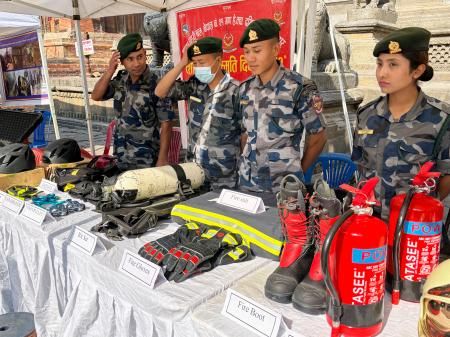Ten Years On: Nepal Earthquake Memorial & Lessons Learned
A Decade After Devastation: Reflecting on the 2013 Nepal Earthquake
Ten years ago, on April 25th, 2013, a devastating 7.8 magnitude earthquake struck Nepal, leaving an enduring scar on the nation's landscape and its people. The earthquake, and its powerful aftershocks, claimed thousands of lives, displaced millions, and caused widespread destruction, particularly in Kathmandu and surrounding areas. This anniversary provides a crucial moment for reflection: remembering the victims, acknowledging the progress made, and analyzing the lessons learned for future disaster preparedness.
Remembering the Victims and the Devastation
The 2013 Gorkha earthquake was a catastrophic event, leaving behind a trail of unimaginable suffering. The death toll officially reached nearly 9,000, with thousands more injured. The UNESCO World Heritage sites of Kathmandu Valley, including ancient temples and stupas, suffered irreparable damage. Entire villages were reduced to rubble, and the infrastructure – roads, hospitals, and communication networks – was crippled. The scale of destruction highlighted the vulnerability of Nepal's infrastructure and the urgent need for improved building codes and disaster resilience strategies.
The Human Cost: Beyond the Numbers
Beyond the statistics, the earthquake's impact on individuals and communities remains profound. Many lost loved ones, their homes, and their livelihoods. The psychological trauma endured by survivors continues to have lasting effects. The earthquake served as a harsh reminder of the human cost of natural disasters and the importance of long-term support for affected populations.
Progress and Reconstruction: A Decade of Effort
In the decade since the earthquake, Nepal has made significant strides in reconstruction. International aid poured in, supporting the rebuilding of homes, schools, and hospitals. The government implemented new building codes aimed at improving seismic resilience. However, the reconstruction process has been slow and complex, hampered by bureaucratic challenges, funding issues, and the sheer scale of the damage.
Challenges and Setbacks in Reconstruction
Despite the progress, challenges persist. Many communities are still struggling to recover fully. The lack of access to adequate housing, healthcare, and education remains a significant concern in remote areas. Furthermore, the long-term economic consequences of the earthquake continue to impact Nepal's development trajectory.
Lessons Learned and Future Preparedness
The 2013 Nepal earthquake served as a stark reminder of the importance of disaster preparedness and risk reduction. Several critical lessons have been learned:
- Strengthening Building Codes and Infrastructure: Implementing and strictly enforcing earthquake-resistant building codes is paramount. Investing in robust infrastructure capable of withstanding seismic activity is crucial for minimizing future damage.
- Early Warning Systems and Community Preparedness: Developing effective early warning systems and educating communities on disaster preparedness measures are vital for saving lives and minimizing losses.
- Effective Disaster Response and Coordination: Streamlining disaster response mechanisms and improving coordination among government agencies, NGOs, and international organizations is crucial for efficient aid delivery.
- Long-Term Recovery and Development: Focusing on sustainable development strategies that build resilience to future shocks is vital for achieving long-term recovery.
- Investment in Research and Monitoring: Continued research and seismic monitoring are necessary for better understanding earthquake risks and improving predictive capabilities.
The Path Forward: Memorialization and Resilience
The tenth anniversary of the Nepal earthquake provides an opportunity to honor the memory of the victims and recommit to building a more resilient future. This includes investing in disaster preparedness, improving infrastructure, and fostering community resilience. The creation of meaningful memorials serves as a powerful reminder of the past and a catalyst for building a safer future.
Looking ahead, Nepal's journey toward resilience requires sustained effort, collaboration, and a long-term commitment to reducing vulnerability to future disasters. This requires ongoing international support and a steadfast dedication from the Nepalese government and its people. Only through collective action can Nepal truly overcome the legacy of the 2013 earthquake and build a more secure and prosperous future.
(CTA): Share your thoughts and reflections on the Nepal earthquake and its lasting impact in the comments below.
